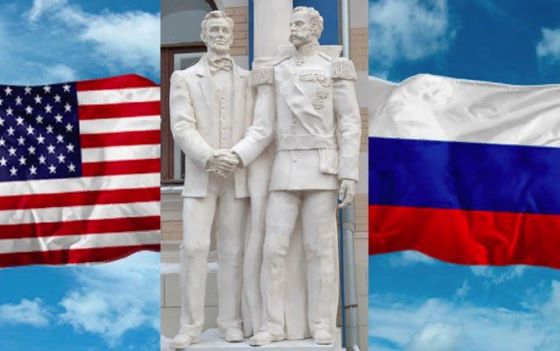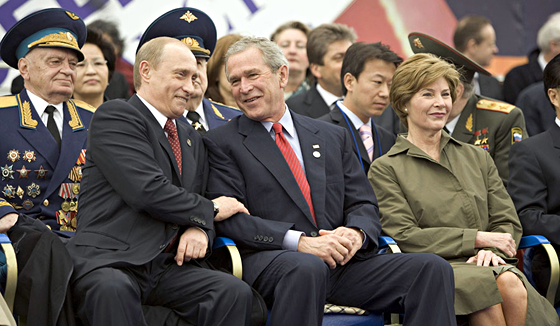Even before the start of Russia-Ukraine war in February 2022 former Energy Secretary Ernest J. Moniz and Senator Sam Nunn have co-authored an article in the September/October issue of Foreign Affairs explaining that the risk of nuclear use has become disturbingly plausible—and proposing concrete steps to reduce the risk. “In the U.S.-Russia relationship, clashing national interests, insufficient dialogue, eroding arms control structures, advancing military technologies and new threats from cyber-space have destabilized the old equilibrium, creating a state of strategic instability where an accident or mishap could trigger a catastrophic chain of events,” – warned two distinguished politicians.
Sam Nunn also added “Sleepwalking into nuclear catastrophe” expression and since then the list of people in the know who share their vision keeps growing.

Catherine the Great.
How did we end in this dangerous situation, and what went wrong is debatable while Washington and Moscow keep pointing fingers on each other but the purpose of this article is to recall for the change the good old days when we were friends and even allies.
Russia recognized the United States on October 28, 1803, and diplomatic relations between the United States and Russia were formally established in 1809. However, the original Thirteen Colonies began to engage in trade with Russia in 1763. During the Revolutionary War, Russian Empress Catherine the Great decided to remain neutral in the conflict, despite British pleas for assistance. It is a recognized historical fact that Russian neutrality proved significant for the victory of the American rebels.

As the American Civil War unfolded, Tsar Alexander II pledged in a letter to President Abraham Lincoln that Russia supported the “maintenance of the American Union as one ‘indivisible nation.’” In 1863, Russia dispatched two Navy squadrons to the ports of New York and San Francisco as a symbolic gesture of support and in response, Lincoln told Russia’s ambassador to the U.S. to “please inform the Emperor of our gratitude and assure His Majesty that the whole nation appreciates this new manifestation of friendship.” The two leaders would continue to correspond during the war, signing letters to each other “Your Good Friend.”
Diplomatic relations were interrupted following the 1917 Bolshevik Revolution when the United States refused to recognize the government of Soviet Russia but 90 years ago, on November 16, 1933 U.S. President Franklin Roosevelt and People’s Commissar of Foreign Affairs of the USSR Maxim Litvinov exchanged notes on the establishment of diplomatic relations between the two countries. Soviet diplomat Alexander Troyanovsky was appointed the first ambassador of the USSR to the United States, and William Bullitt was appointed the American ambassador to the Soviet Union.
During WWII the U.S. and USSR were allies in a major global conflict. April 25, 1945 marks the day of a historic meeting between Soviet and American soldiers on the Elbe River in the city of Torgau in Germany on the eve of their joint victory over Nazi Germany.
President Richard Nixon during his term in the White House sought a thaw in American-Soviet relations, known as détente. Soviet President Leonid Brezhnev agreed with Nixon which opened broad possibilities for the solution of pressing international issues.
President Ronald Reagan first met reform-minded Soviet leader Mikhail Gorbachev in Geneva in 1985. Their next meeting that would prove to be the most consequential event took place in the Icelandic capital Reykjavík in October 1986.
George H.W. Bush talked in 1990 about a “Europe whole and free” and a new “security architecture from Vancouver to Vladivostok,” while Boris Yeltsin, during his 1992 address to the joint chambers of Congress, exclaimed, “God bless America.”

On November 15, 2001 George W. Bush said the following: “It’s my honor also to introduce President Putin to Crawford. I bet a lot of folks here, particularly the older folks, never dreamt that an American President would be bringing the Russian President to Crawford, Texas. A lot of people never really dreamt that an American President and a Russian President could have established the friendship that we have.”
On April 25, 2020 U.S. President Donald Trump and Russian President Vladimir Putin issued the following joint statement: “The “Spirit of the Elbe” is an example of how our countries can put aside differences, build trust, and cooperate in pursuit of a greater cause. As we work today to confront the most important challenges of the 21st century, we pay tribute to the valor and courage of all those who fought together to defeat fascism. Their heroic feat will never be forgotten.”
The full text can be found on the U.S. Embassy in Moscow site.
Edward Lozansky is President of the American University in Moscow.



